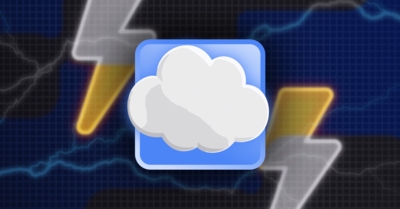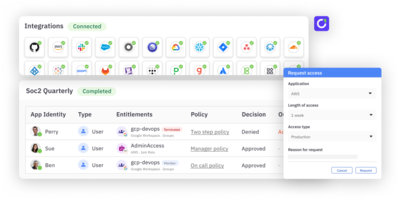“Reports of my death are greatly exaggerated. - Mark Twain
Is enterprise SaaS dead?
There’s a lot of hand-wringing about what AI means for enterprise SaaS. Are we all just marching off a cliff, doomed to be replaced by AI-written software?
Spoiler alert: it’s over-predicted. Let’s take the following thought experiment:
A company gets tired of paying for Salesforce and decides to build its own CRM. An enterprising software engineer takes all of Salesforce’s technical documentation, feeds it into an LLM, and voila—one shots a fully functional CRM.
Awesome. They just generated a great open-source CRM project.
This is new, but also not new. We’ve always had a “zero-cost” price anchor in most product categories with open-source software. AI is just another way to make that possible, faster—but in a way that’s arguably worse without contributors or community built around it. Open source has worked well for underlying infrastructure, but its success with end-user applications has been more inconsistent. Why?
It’s about the service
AI is good at writing software, but less so at making a product. Enterprise software needs to be run, maintained, migrated, updated, scaled, secured, and supported. That’s the service in Software-as-a-Service.
Certainly, the code has value, but the challenge comes in running and managing the software—the so-called “ilities” (scalability, supportability, maintainability, reliability, etc.). Beyond that, more value comes from:
- Customer experience: ensuring smooth onboarding, usability, and responsiveness
- Partnership ecosystem: integrations, third-party add-ons, and industry-specific optimization
- Domain expertise: knowing what to build, why it matters, and how to evolve the software
The specialization, service, and support is what lets companies focus on what they do best—their core business.
It’s not the ability to write code that threatens enterprise software. It’s everything around it. For AI to truly commoditize enterprise SaaS, it needs to do more than generate software—it must run, deploy, upgrade, and evolve it autonomously. That means AI agents must reach a level where they can handle complex deployments, manage incremental updates, and make strategic feature decisions. There’s no reason to believe that agentic AI won’t be able to do so at some point, but I’m guessing this will be the longest and hardest challenge to solve.
It’s Amara’s Law: we overestimate what technology can do in the short term, and underestimate it in the long term. Declaring enterprise SaaS as dying today is premature, but becomes more plausible down the line.
That said, enterprise SaaS WILL evolve
While in the short term, the death of SaaS is overblown, AI will push the focus and differentiation to a few different areas:
Increased feature velocity
If your team isn’t shipping 40-50% more code, yesterday, you’re dead in the water. You have to expect that software teams and tools will move faster. If you can’t keep up with that pace, someone else will.
Platform or die
When we first started ConductorOne, I was told to focus on a single product area. It was the traditional startup wisdom – I get it. I’m glad we completely ignored this advice and stuck with our intuition.
Just a few years ago, building a compound startup—one with multiple interlocking products that targeted the same ICP and benefited from a common platform—was reserved for well-funded, repeat founders. But with software development costs falling and AI competition surging, it’s now a necessity. To stand out, startups must first nail a focused product, then quickly expand to address adjacent customer needs.
If you’re building a point solution, you will be one-shotted – either as a feature in another product stack or by a software engineer within the company. Platformization gives a company data gravity—the ability to create value by knowing everything about a specific domain of data in an enterprise, and having authorization, business logic, and business process automation related to the domain. Without data gravity, you’re a point solution, and you won’t last.
Intangibles
Is your team awesome to work with? Is your brand strong? Is your sales team collaborative, consultative, and world-class? How do you partner with your customers?
If the non-software aspects of your business aren’t dialed in, fix them—fast.
Expertise is only going to matter more, especially for startups. Do customers turn to you for guidance on solving their biggest challenges? If not, that’s a problem. Be more than just software—be the experts who help customers solve their most strategic problems. Your expertise doesn’t just build trust; it shapes your ability to build the right product and capabilities.
User experience
For humans, great UX still means beautiful, intuitive interfaces. For machines, it means native MCPs that allow AI agents to interact with your product seamlessly. UX has never been more important—especially while humans are still in the loop.
The bigger question: how much longer will humans even need to interact with enterprise software at all? Will full MCP-driven, domain-specific enterprise clouds eventually eliminate the need for a user interface? Or will human interaction become such a minor use case that designing for people becomes an afterthought?
Enterprise SaaS is leveling up
I’m convinced we’re on the verge of an explosion in enterprise SaaS value creation. The winners will be the ones who embrace platformization, embed AI at the core of their offerings, and double down on expertise, user experience, and execution.
The hard truth: running a SaaS business like it’s 2015 is a failure mode. If you’re not moving faster, expanding your platform, and building deeper expertise to provide customer value, you’re falling behind. Enterprise SaaS isn’t going extinct—it’s entering the most transformative era yet. But only for those willing to adapt.





